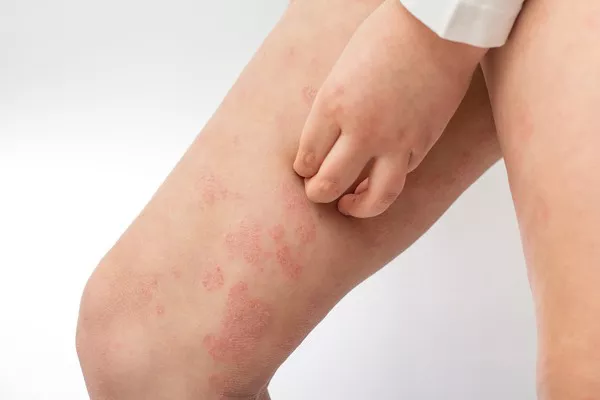Hidradenitis suppurativa (HS) is a chronic skin condition characterized by the formation of painful lumps under the skin, typically in areas where skin rubs together, such as the armpits, groin, buttocks, and under the breasts. These lumps can become inflamed, leading to abscesses and scarring. Understanding what HS feels like is crucial for those affected and for healthcare providers to offer better care and support.
The Initial Sensation: Early Signs of Discomfort
The earliest sensation of HS is often subtle and easily mistaken for other common skin issues like ingrown hairs or simple cysts. It starts with small, pea-sized lumps that form under the skin. These lumps may initially be painless, but as they develop, they can become tender and sensitive to touch.
1. Localized Pain and Discomfort: The pain associated with these lumps can be localized and mild initially, often described as a dull ache or a feeling of pressure in the affected area. As the condition progresses, this pain can intensify, becoming sharp and persistent.
Progression of Pain: From Mild to Severe
As HS progresses, the lumps can grow larger and more numerous. This increase in size and number can lead to significant pain and discomfort.
1. Inflammation and Swelling: The affected areas can become inflamed, leading to redness, warmth, and swelling. This inflammation can exacerbate the pain, making the skin feel tight and tender. The swelling can also restrict movement, especially in areas like the armpits and groin, where mobility is crucial.
2. Burning Sensation: Many people with HS describe a burning sensation in the affected areas. This burning can be persistent and is often a sign of the underlying inflammation and infection.
3. Abscess Formation: One of the most painful aspects of HS is the formation of abscesses. These are large, pus-filled lumps that can develop from the initial lumps. The abscesses can cause severe pain, described by patients as throbbing or pulsating. The pressure from the abscesses can make even light contact with the skin unbearable.
Chronic Pain and Recurrence
HS is a chronic condition, meaning it persists over time and often follows a cycle of flare-ups and remission. This cyclical nature can lead to ongoing pain and discomfort.
1. Persistent Pain: Even during periods of remission, the affected areas may still experience a low level of chronic pain. This pain can be dull and constant, creating a continuous sense of discomfort.
2. Recurrent Flare-Ups: During flare-ups, the pain can become acute and severe. The lumps can quickly become inflamed and painful, leading to a rapid escalation of symptoms. The recurrence of these painful episodes can be distressing and debilitating.
Impact on Daily Life
The pain and discomfort associated with HS can have a profound impact on daily life. It can affect physical activities, emotional well-being, and overall quality of life.
1. Physical Limitations: The pain and swelling can restrict movement, making it difficult to perform everyday activities. Simple tasks like walking, lifting, or even sitting can become painful challenges. This physical limitation can lead to a sedentary lifestyle, which can further exacerbate the condition.
2. Sleep Disturbances: The pain from HS can interfere with sleep, making it difficult to find a comfortable position. This lack of restful sleep can lead to fatigue and further reduce the ability to cope with the condition.
3. Emotional and Psychological Impact: The chronic pain and visible nature of HS can lead to significant emotional distress. Many people with HS experience feelings of embarrassment, self-consciousness, and depression. The constant pain and fear of flare-ups can lead to anxiety and a sense of hopelessness.
Managing Pain: Treatment and Coping Strategies
Managing the pain associated with HS is a crucial aspect of treatment. There are several approaches to alleviate the pain and improve quality of life.
1. Medications: Various medications can help manage the pain and inflammation associated with HS. Nonsteroidal anti-inflammatory drugs (NSAIDs) can reduce pain and swelling. In more severe cases, antibiotics or biologics may be prescribed to reduce inflammation and prevent infection.
2. Topical Treatments: Topical treatments, such as corticosteroid creams, can help reduce inflammation and pain. These creams can be applied directly to the affected areas to provide targeted relief.
3. Warm Compresses: Applying warm compresses to the affected areas can help reduce pain and inflammation. The warmth can promote drainage of abscesses and alleviate some of the pressure and pain.
SEE ALSO: Is Hidradenitis Suppurativa Curable?
4. Surgical Interventions: In some cases, surgical intervention may be necessary to drain abscesses or remove affected tissue. These procedures can provide relief from the acute pain of abscesses and reduce the frequency of flare-ups.
5. Lifestyle Modifications: Making certain lifestyle changes can also help manage HS pain. Maintaining a healthy weight, wearing loose-fitting clothing, and practicing good hygiene can reduce friction and irritation in affected areas.
Psychological Support
Given the emotional and psychological impact of HS, seeking psychological support can be beneficial. Counseling or therapy can help individuals cope with the emotional challenges of living with a chronic, painful condition. Support groups can also provide a sense of community and understanding, helping individuals feel less isolated in their experience.
Conclusion
Hidradenitis suppurativa is a painful and often debilitating condition. The pain ranges from mild discomfort in the early stages to severe, chronic pain as the condition progresses. This pain can significantly impact daily life, affecting physical activities, emotional well-being, and overall quality of life. Managing HS pain involves a combination of medical treatments, lifestyle modifications, and psychological support. Understanding what HS feels like is essential for providing effective care and support to those affected by this challenging condition.
Related Topics:



























